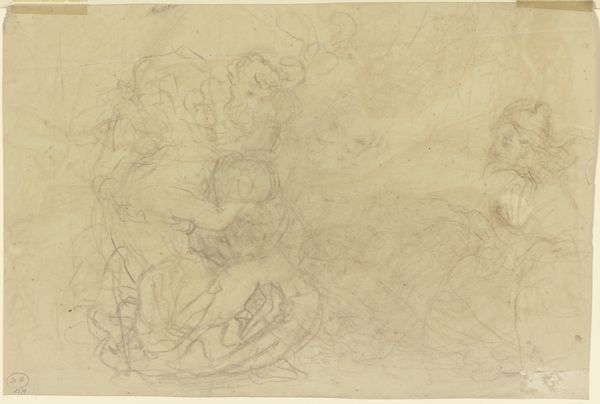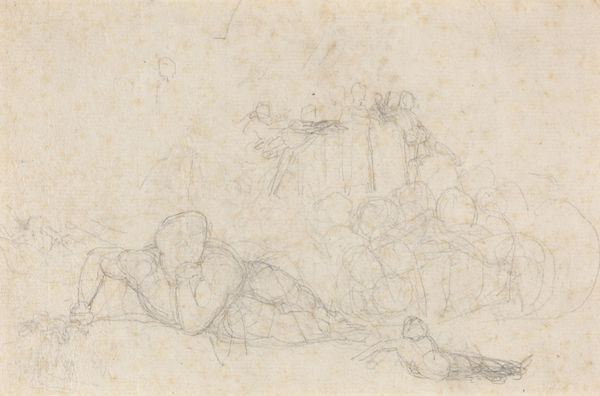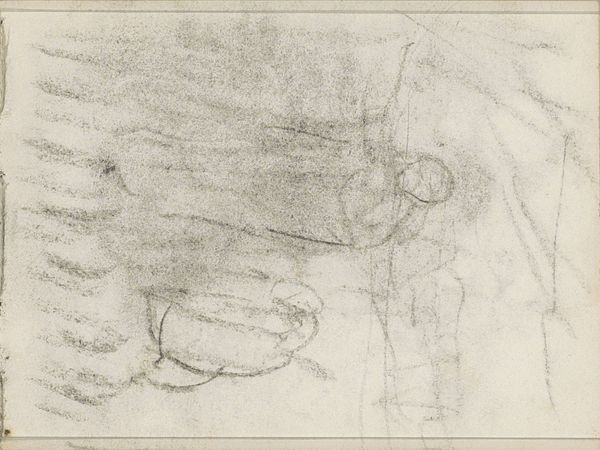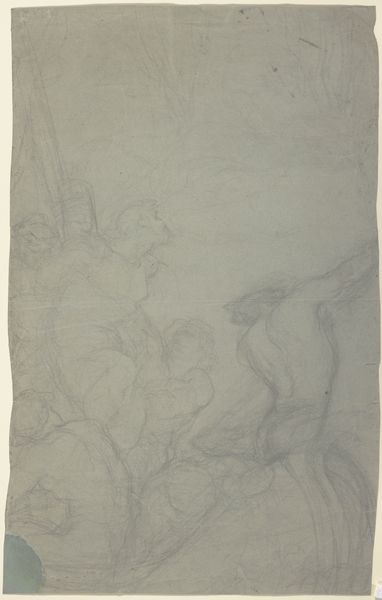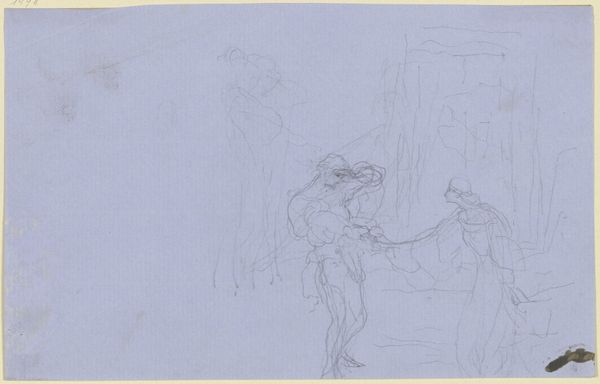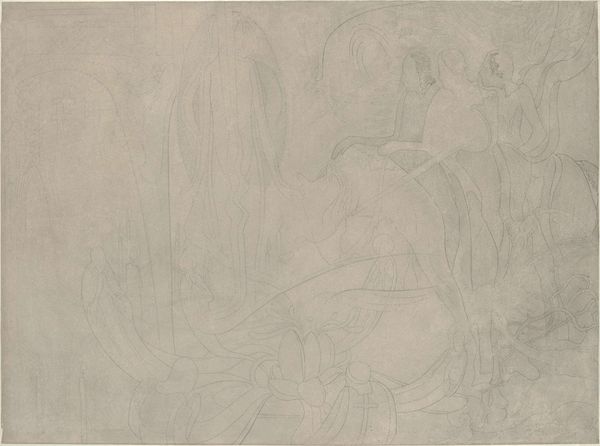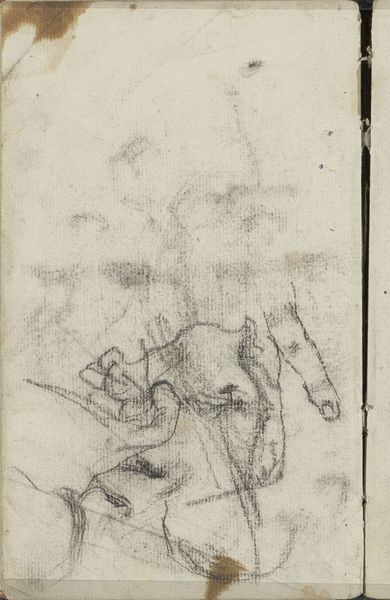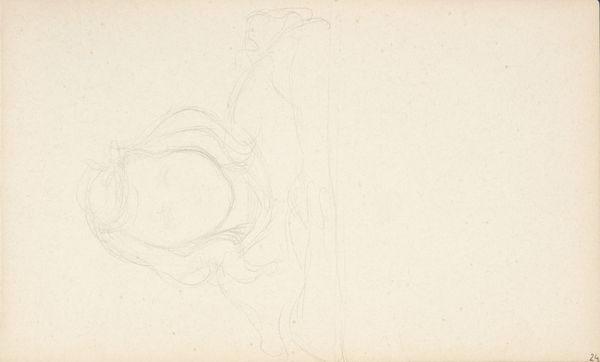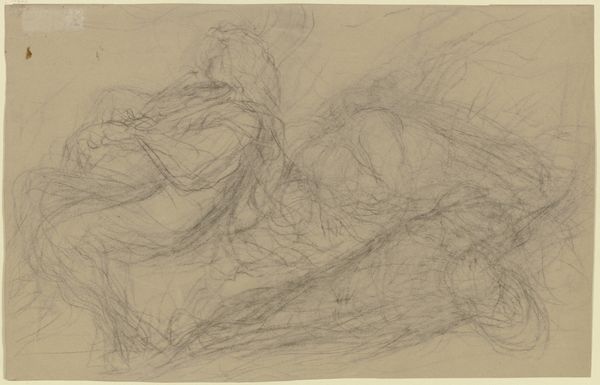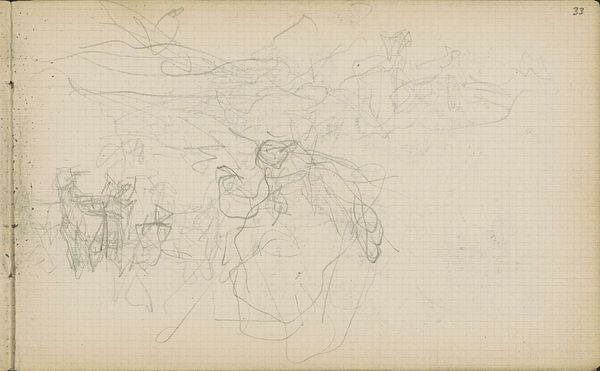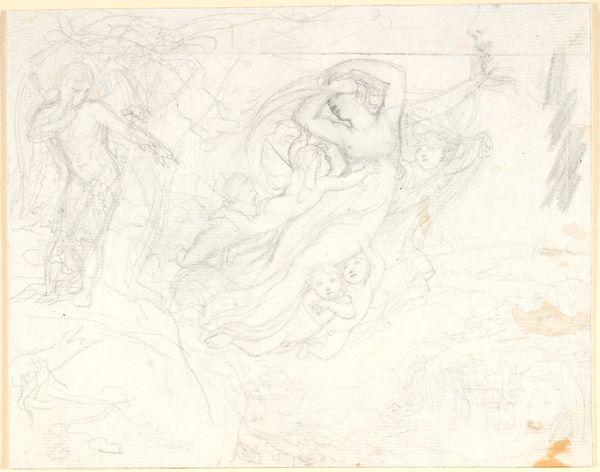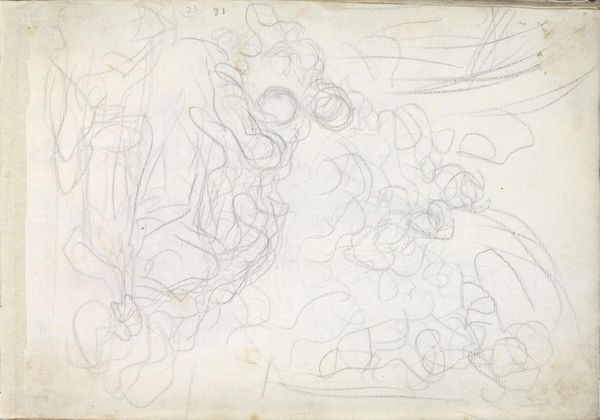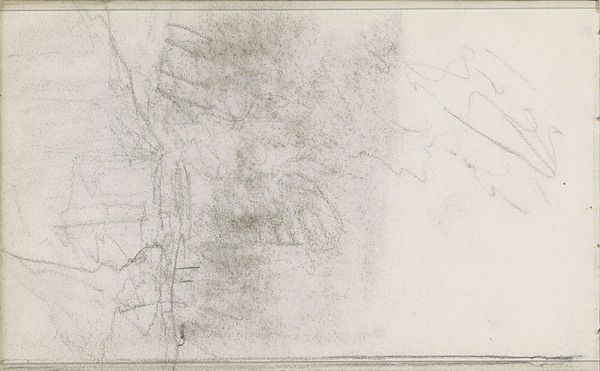
drawing, pencil
#
drawing
#
pencil sketch
#
landscape
#
etching
#
figuration
#
romanticism
#
pencil
#
history-painting
Dimensions: 181 mm (height) x 233 mm (width) (bladmaal)
Curator: Here we have C.G. Kratzenstein Stub’s “Fingals kamp med Lodas ånd” from 1814. Editor: The immediate impression is one of barely-there figures struggling within an ethereal, almost washed-out landscape. It looks fragile. Curator: Fragile indeed. It's a pencil drawing, allowing for delicate lines that suit the Romantic era's fascination with the sublime. The subject matter, a battle from Gaelic legend, perfectly encapsulates that movement. Look at how Stub uses very basic raw material and process, pencil on paper, to bring the Ossianic cycle to life. These were tales popularised by James Macpherson, and widely consumed. Editor: Yes, but consider how the artist builds tension purely through composition and the contrast between the muscular Fingal and the vaporous Loda. Fingal’s figure, though lightly sketched, has a clear anatomical structure, poised against the circular form of his shield and the looming spirit, its presence merely suggested by strokes and suggestive forms. It has got to be the semiotics of implied presence; pure artistry of Romanticism, creating meaning with line, shape, and negative space! Curator: Absolutely, and we have to remember that the means of reproducing these images would have dictated their audience and accessibility. Pencil sketches such as these could serve as studies for larger works, or were valued items of material consumption in and of themselves. Either way it speaks to a very specific cultural consumption of history and legend during this period. Editor: Though only a sketch, the barest of bones that create figuration; even here Stub conveys the drama, the core narrative, and emotional turmoil! Curator: And that he does within a very constrained material reality. Perhaps we can imagine it less as 'bare bones' and instead a revealing diagram, illustrating the industrial conditions in which such works come to have value and meaning. Editor: I remain taken by how much impact results from the absolute minimum required. A masterclass. Curator: Indeed, a powerful insight into the interaction between artist and audience during a period when national identity and its consumption took center stage in Europe.
Comments
No comments
Be the first to comment and join the conversation on the ultimate creative platform.
